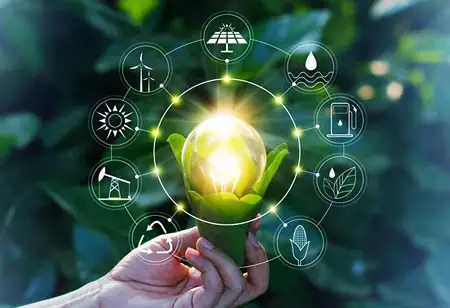Thank you for Subscribing to Energy Business Review Weekly Brief
The Potential of Vibration Energy Harvesting for Building Transport Transformation
Vibration energy harvesting offers a promising path to enhance building transport sustainability by converting mechanical vibrations into electricity, supporting a greener urban environment through ongoing development and adoption.

By
Energy Business Review | Monday, November 27, 2023
Stay ahead of the industry with exclusive feature stories on the top companies, expert insights and the latest news delivered straight to your inbox. Subscribe today.
Vibration energy harvesting offers a promising path to enhance building transport sustainability by converting mechanical vibrations into electricity, supporting a greener urban environment through ongoing development and adoption.
FREMONT, CA: In light of the world's increasing focus on sustainability and energy efficiency, it becomes pivotal to explore innovative approaches to harness renewable energy sources. Vibration energy harvesting emerges as an innovative method with significant potential, particularly in the realm of building transportation systems.
Applications in Building Transportation
Elevators and Escalators
These systems are essential in modern urban settings, providing vertical mobility in buildings and serving individuals with limited mobility. Vibration energy harvesting is utilized to capture the mechanical vibrations generated by the movement of elevators and escalators. Subsequently, these vibrations are converted into electricity to partially offset the power consumption of these devices. This reduction in energy usage diminishes the environmental impact and decreases energy costs for building owners and managers.
Foot Traffic
Buildings located in bustling areas like airports, malls, and offices constantly experience people moving around, leading to vibrations caused by footsteps. This energy can be captured using specialised materials known as piezoelectric materials. By integrating them into walkways, each step people take can generate electricity. This eco-friendly power source can be employed for lighting, signage, or other low-energy requirements in the building, thereby reducing the building's reliance on conventional grid electricity.
Transportation Hubs
Places such as train stations and airports serve as busy hubs with significant foot traffic. Besides pedestrian vibrations, the operation of trains and aeroplanes generates substantial mechanical vibrations. Installing vibration energy harvesting systems in these hubs helps offset a portion of their energy needs. The harvested energy finds applications in various areas such as lighting, ticketing systems, or charging stations for electric vehicles, thus contributing to a more sustainable transportation infrastructure.
Building Envelopes
Contemporary building designs integrate diverse technologies to enhance energy efficiency. Vibration energy harvesting is embedded into the building's envelope, enabling it to capture wind-induced vibrations and vibrations from nearby road traffic. This harvested energy powers sensors, communication devices, and other building automation systems, thereby reducing the building's dependence on traditional energy sources.
Benefits of Vibration Energy Harvesting in Building Transportation
Sustainability
The primary advantage of vibration energy harvesting in building transportation lies in its contribution to sustainability. Generating electricity from existing mechanical vibrations, reduces reliance on non-renewable energy sources, aiding in diminishing the carbon footprint of buildings and their associated transport systems.
Cost Savings
Vibration energy harvesting results in substantial cost savings for building owners and operators. Lowering energy consumption from the grid reduces electricity bills, making building transport more economically sustainable in the long term.
Reliability
Unlike solar and wind energy, which are intermittent and reliant on weather conditions, vibration energy harvesting offers a consistent power source as long as there is mechanical activity. This reliability makes it a valuable addition to building transport infrastructure.
Integration
Vibration energy harvesting systems seamlessly integrate into existing building transport setups without causing major disruptions. This ease of integration renders it a practical solution for retrofitting older buildings and implementing new constructions.
Vibration energy harvesting represents an exciting opportunity to enhance the sustainability and energy efficiency of building transports. By capturing mechanical vibrations and converting them into electrical energy, this technology contributes to a greener and more sustainable future. The potential benefits of vibration energy harvesting are too compelling to overlook. With ongoing research and development, there is a broader adoption of this innovative technology in building transports, facilitating progress toward a sustainable and environmentally friendly urban landscape.






